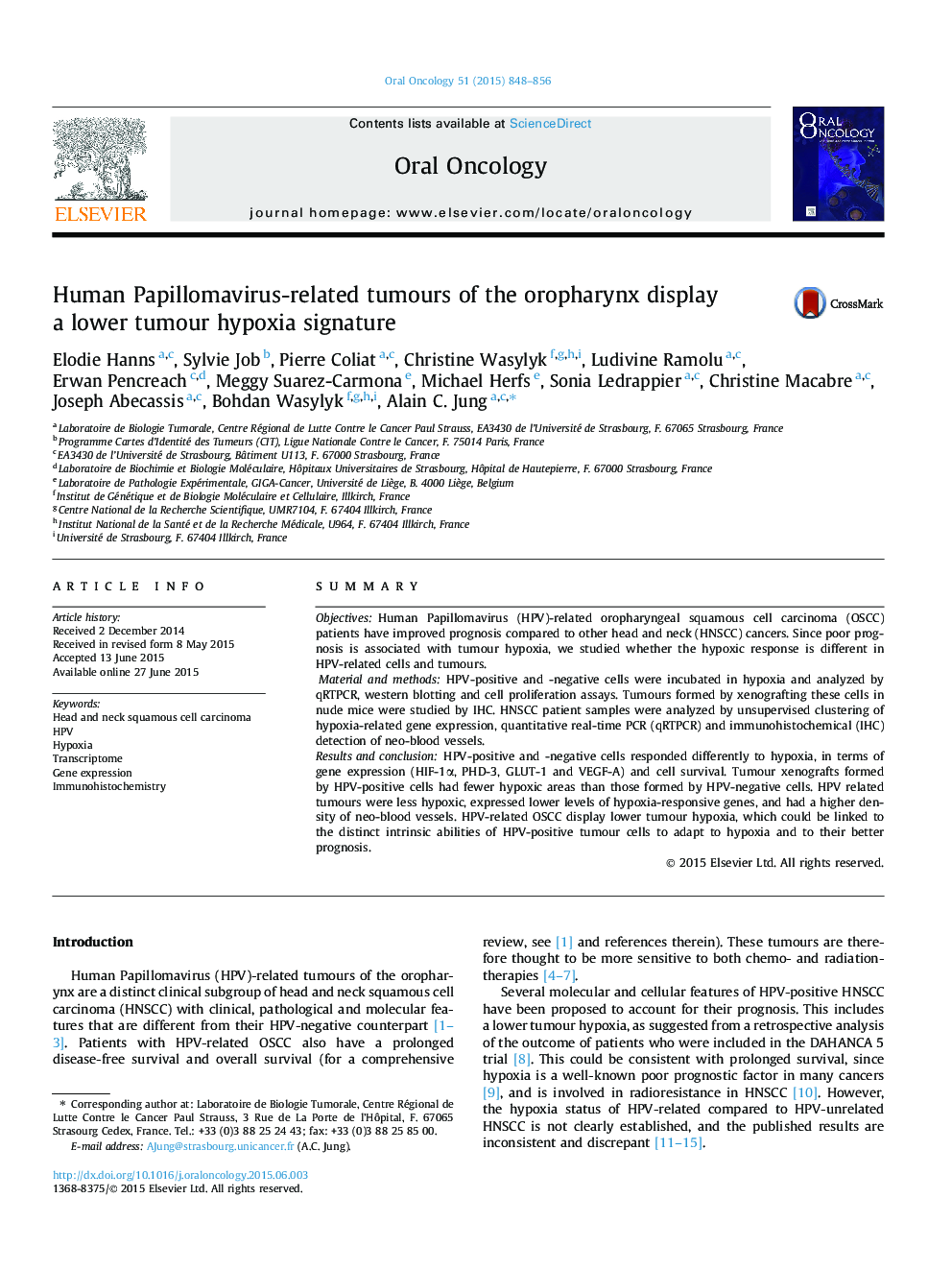| کد مقاله | کد نشریه | سال انتشار | مقاله انگلیسی | نسخه تمام متن |
|---|---|---|---|---|
| 3163800 | 1198745 | 2015 | 9 صفحه PDF | دانلود رایگان |
• HPV-positive and -negative HNSCC cells lines adapt differently to hypoxia.
• HPV-positive xenografts display less hypoxic area/cells.
• HPV-positive OSCC have a lower hypoxia status.
• HPV-positive OSCC display increased tumour angiogenesis.
• Improved response to therapy could be linked to these hypoxia properties.
SummaryObjectivesHuman Papillomavirus (HPV)-related oropharyngeal squamous cell carcinoma (OSCC) patients have improved prognosis compared to other head and neck (HNSCC) cancers. Since poor prognosis is associated with tumour hypoxia, we studied whether the hypoxic response is different in HPV-related cells and tumours.Material and methodsHPV-positive and -negative cells were incubated in hypoxia and analyzed by qRTPCR, western blotting and cell proliferation assays. Tumours formed by xenografting these cells in nude mice were studied by IHC. HNSCC patient samples were analyzed by unsupervised clustering of hypoxia-related gene expression, quantitative real-time PCR (qRTPCR) and immunohistochemical (IHC) detection of neo-blood vessels.Results and conclusionHPV-positive and -negative cells responded differently to hypoxia, in terms of gene expression (HIF-1α, PHD-3, GLUT-1 and VEGF-A) and cell survival. Tumour xenografts formed by HPV-positive cells had fewer hypoxic areas than those formed by HPV-negative cells. HPV related tumours were less hypoxic, expressed lower levels of hypoxia-responsive genes, and had a higher density of neo-blood vessels. HPV-related OSCC display lower tumour hypoxia, which could be linked to the distinct intrinsic abilities of HPV-positive tumour cells to adapt to hypoxia and to their better prognosis.
Journal: Oral Oncology - Volume 51, Issue 9, September 2015, Pages 848–856
